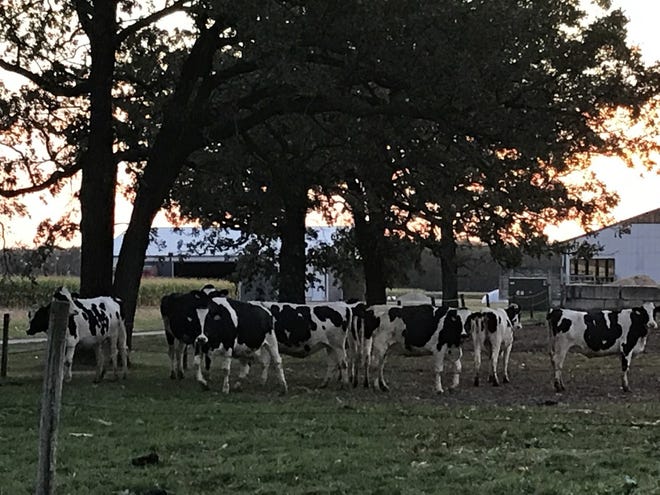Small routine changes mean larger milk flow in dairy cows
 Samantha Hendrickson
Samantha Hendrickson
Employees thrive in routine, and cows are no different.
With just a few simple changes, farmers can increase their herd's milk flow significantly, according to experts at Hoard's Dairyman's latest dairy symposium.
The emphasis on milking cows faster and faster on larger and larger dairy farms is actually reducing the amount of milk able to be harvested, said Roger Thomson of Michigan State University, especially if the milking process goes against the cow's physiology.

"The cow needs to fully participate in the milking event," Thomson said. "She has to be interested in sharing her food with us as humans ... If we cut corners or violate some of the rules that the cow needs for a good milk letdown reflex, we will not get all of the milk out of her gland."
Bimodal letdown happens when there is not enough stimulation provided to the udder before the milking process. Lack of stimulation means that the oxytocin does not arrive at the glands, which makes the cow more willing to give milk.
In the letdown phase, if milk isn't secreted, that can cause damage and blood congestion in the udder and result in less milk later on.
The solution? A nice massage.
A team at Cornell university conducted a study showing that between 10-20 seconds of udder stimulation in addition to wiping the cow prior to milking resulted in milking units releasing from the cow faster due to higher milk flow.

"The cows were telling us they they were happier with this routine, 100%," said Paul Virkler of Cornell University.
Scott Ferry, who owns Ferry Farms in Litchfield, Michigan, said he saw issues with bimodal milking on his farm that milks 16 cows at a time, 500 cows per day. So, he put the research to the test.
"We needed to come up with a solution what was simple; simple to communicate and was simple to train," Ferry said.

Immediately after wiping, Ferry said they massaged the udders for approximately 15 seconds, and the results were "instantaneous" visually.
"We were getting a minimum of two and a half more pounds per cow per day," Ferry said.
Some listeners at the end of the webinar had concerns about the economic implications of spend more time and labor on the cows.
Chris Wolf, an agricultural economist from Cornell University, said it's up to dairy farm managers how to use their labor and funds, but that the evidence is strong for this new routine.
"Here's an example of new information, new management possibilities that can enhance the milk yield for what's likely a very small amount of time and money in terms of operational changes and adjustments," Wolf said.
Samantha Hendrickson can be reached at 414-223-5383 or shendrickson@jrn.com. Follow her on Twitter at @samanthajhendr.